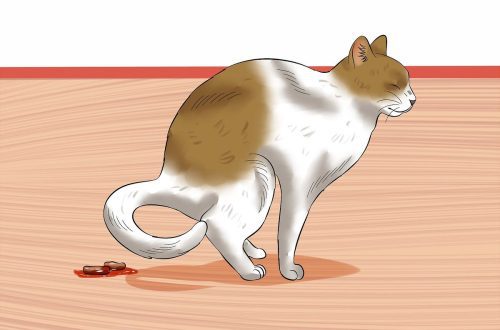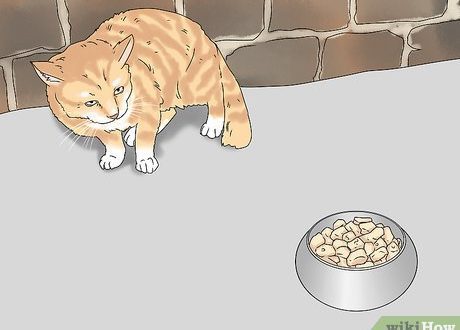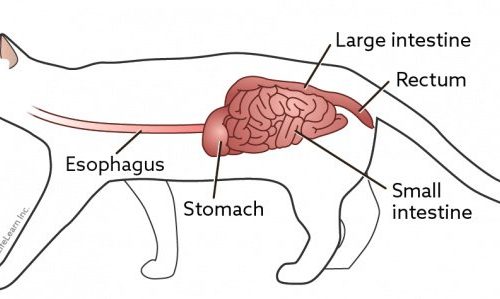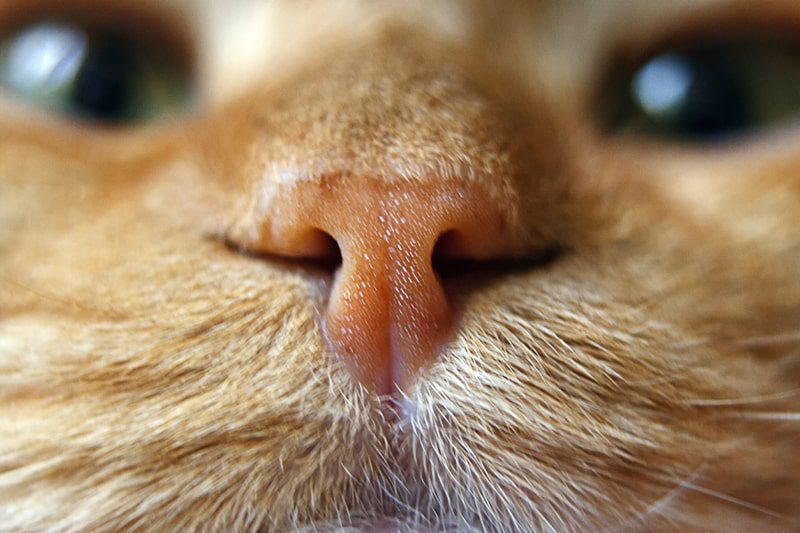
Dry nose in a cat – why and what to do?
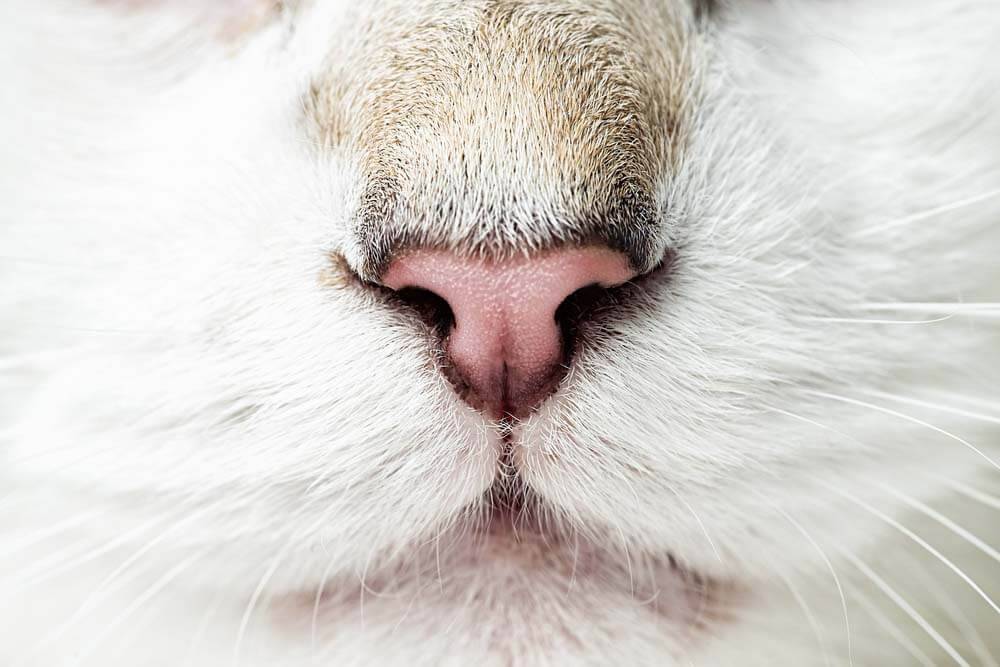
Contents
What kind of nose should a healthy cat have?
As for the temperature, then you definitely do not need to rely on it.
Normally, a healthy cat’s nose should be clean, without any discharge.
The condition of the nose can change several times during the day: from dry to wet, from warm to cold.
It will depend to a greater extent on the environmental conditions in which the pet lives.
With a fever, a cat’s nose can actually become hot and dry. However, the only accurate method for determining body temperature in animals is to measure it in the rectum.
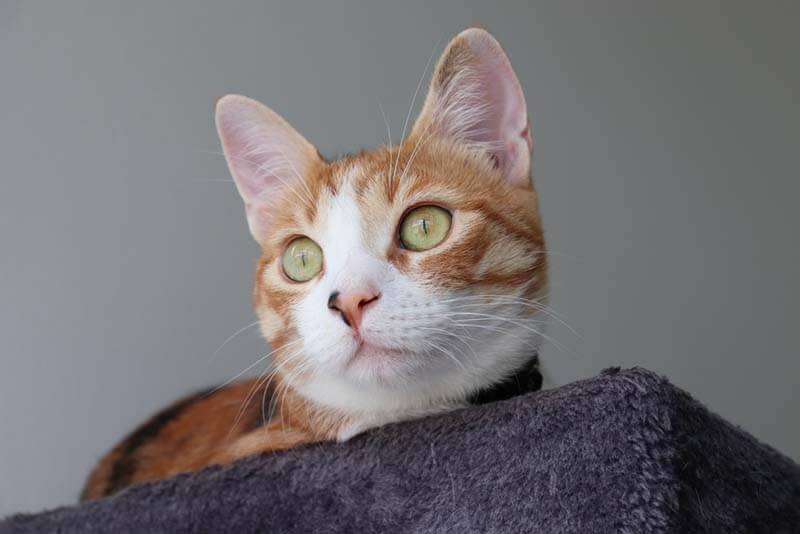
Why does a cat have a dry and warm nose?
A hot nose in a cat can be the result of many conditions and causes. Some of them have nothing to do with health, while others can be directly or indirectly related to various diseases.
Non-dangerous reasons
As a rule, against the background of the factors described below, in addition to dry nose in a cat, no serious changes in the behavior and well-being of animals are noted.
Climatic conditions
When the house is hot, the air circulation is poor, especially in winter, the nose can be warm. Similarly, it can dry out if the pet has been lying in the sun or near a heat source.
After sleep
When animals sleep, they don’t lick their lips and therefore don’t moisten the surface of their nose, so it can be dry when they wake up.
Physical activity
During outdoor games, pets may slightly increase their body temperature, which means that all moisture from the surface of the nasal mirror tends to evaporate faster than usual.
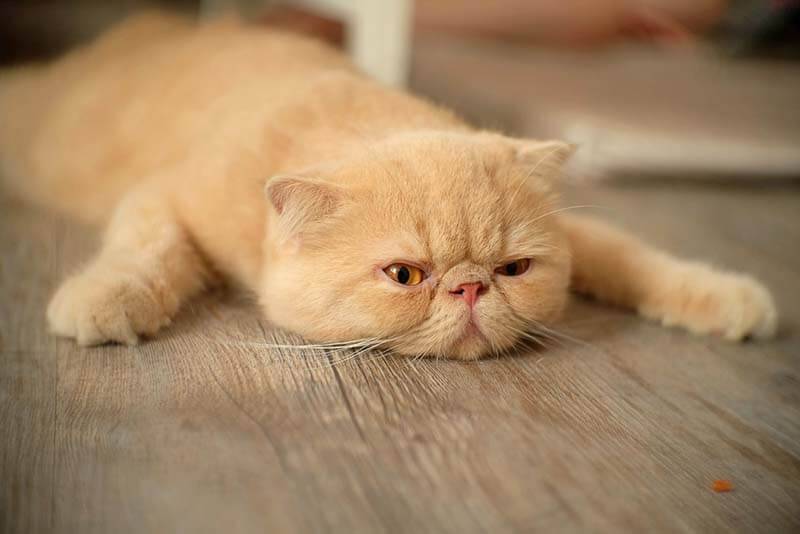
Dangerous reasons
It is important to note that the following factors are likely to cause additional symptoms in addition to dry noses in cats.
Infectious diseases
Viruses, bacteria, microscopic fungi cause diseases of organ systems, manifested by a variety of clinical symptoms. Of the most common are diseases of the respiratory system and the gastrointestinal tract (GIT).
Noncommunicable diseases
Here we are talking about chronic diseases of internal organs (for example, chronic kidney disease). Under such conditions, animals have reduced appetite and water intake, which leads to dehydration.
Foreign objects
One of the fairly common causes of problems with the nose of a cat, and in particular, the presence of its dryness, is the ingress of small particles of food, blades of grass and other foreign objects into its cavity.
Neoplasms and polyps
Tumors in the nasal cavity are mainly found among older animals (but there are exceptions). Polyps are more often diagnosed in young oosbeans. Both conditions can block the nasal passages. The presence of these pathologies is quite difficult to suspect only by the warm nose of a cat.
Dermatological diseases
A number of diseases that directly affect the animal’s skin can also affect the nose. One of these diseases is pemphigus foliaceus, a rare and rather serious disease associated with impaired functioning of the immune system.
The eosinophilic granuloma complex is also an autoimmune condition that usually affects the cat’s lips and may spread to the nose, which becomes warm.
By itself, dermatitis can occur on any part of the skin, including the nasal mirror.
Burns
Just like humans, cats can get sunburned. Many of them like to lie down longer in the sun or near heating appliances.
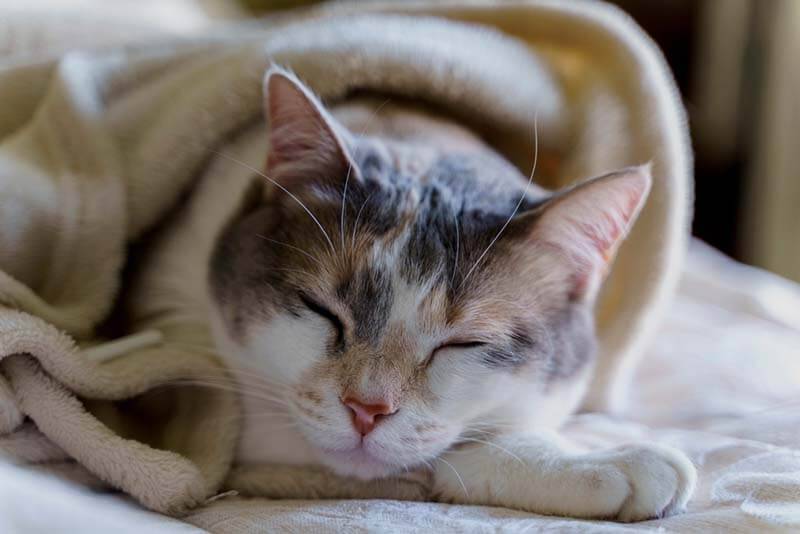
Concomitant symptoms
In a large percentage of cases, a change in the surface of the nose will not be associated with the presence of pathology in the animal. However, if the cat is still sick, you should pay attention to other symptoms.
One of the most common and non-specific signs of an infection is fever, accompanied by hot ears and a dry nose in cats. There is also a decrease in appetite and a decrease in fluid intake, lethargy (lethargy and fatigue). If the problem is localized in the gastrointestinal tract, then vomiting and diarrhea may additionally be noted.
With dermatological diseases on the nose, lips, crusts, swelling of tissues, itching appear.
Diseases of the respiratory system, foreign objects, neoplasms and polyps on the mucous membrane of the nasal cavity, in addition to a dry nose in a cat, can be manifested by lethargy, sneezing, watery eyes, nasal discharge, flaky, crusted, swollen or damaged skin on the face.
In a critical condition, the body temperature of the animal can drop significantly, and therefore the nose of cats becomes cold.
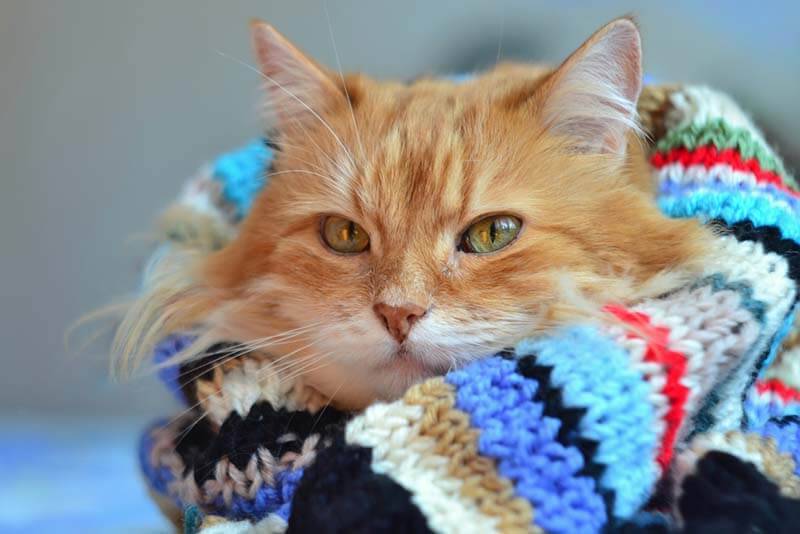
Too wet nose in cats
If the cat has a wet and cold nose, but at the same time it has not changed in behavior, most likely there is nothing to worry about. This condition can be caused by several reasons:
normal thermoregulation. Cats don’t sweat all over their bodies like humans do. In this regard, a wet nose helps the cat to control body temperature, namely, to keep cool.
A wet nose enhances a cat’s sense of smell and helps determine where odors are coming from.
But if the pet, in addition to changing the surface of the nose, has uncharacteristic behavior (decreased appetite, lethargy, sneezing, vomiting, etc.), this should alert the owner.
This condition may indicate the presence of problems in the pet: for example, infections that damage the respiratory tract, various stress factors, etc. In this regard, it is necessary to contact a face-to-face consultation with a veterinarian.
Thus, a wet nose in a cat can be both the norm and indicate a pathology.
Diagnostics
Of course, if a cat has a warm and dry nose associated with non-dangerous reasons, then no diagnostics will be needed. In all doubtful cases, it is better to take the pet to the veterinarian to make sure.
Finding out the cause of any disease begins with the collection of an anamnesis (medical history) and examination of the animal. This is an important part of the diagnosis procedure. The veterinarian must have a clear picture of what is happening: whether the pet has been vaccinated or not, whether it has been treated against parasites, when the symptoms began, etc.
To exclude infectious diseases, specific tests are carried out to detect bacteria, viruses, fungal pathogens (for example, the PCR method).
To exclude foreign objects, tumors, polyps, computed and magnetic resonance imaging, rhinoscopy are used.
When neoplasms are detected, as well as various dermatological diseases, material is taken for cytological and / or histological examination.
If the general condition of the pet is severe, standard laboratory and instrumental studies are carried out: a clinical blood test and a biochemical study of blood serum (if necessary), an x-ray of the chest and head.
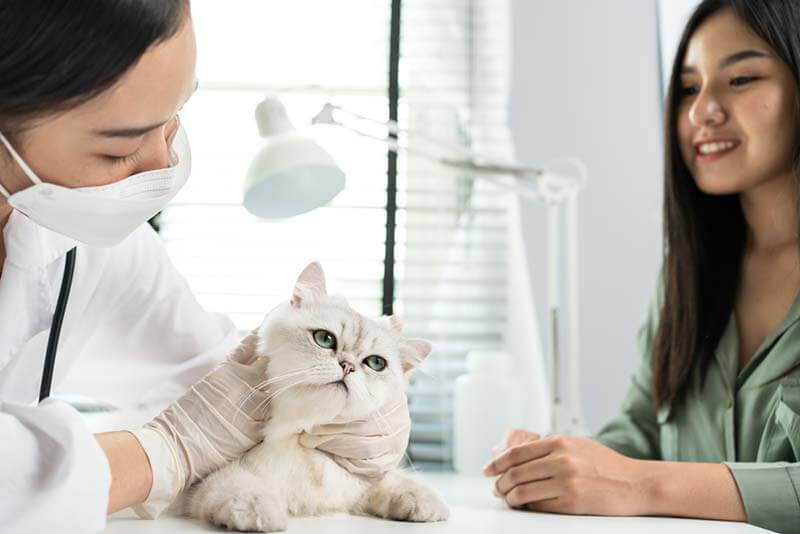
Treatment
The treatment plan is drawn up based on the information obtained during the examination of the pet. If the cat has only a hot nose and no change in behavior, veterinary attention is likely to be unnecessary.
If a foreign object is stuck in the cat’s nasal cavity or neoplasms, polyps are diagnosed, then anesthesia (anesthesia) and surgery will be required to safely remove them.
Treatment of viral, bacterial, fungal infections of the upper respiratory tract depends on the severity of the symptoms of the disease. Antibacterial and, in some cases, antiviral drugs are mainly used. Complications may require hospitalization for more intensive treatment: intravenous fluids, force-feeding.
In dermatological diseases, depending on the symptoms, drugs are used to relieve itching, anti-inflammatory, depress the immune system, local treatments with antiseptic solutions are prescribed, and a hypoallergenic diet can also be recommended.
Kitten dry nose
The nose of a kitten, as in adults, should normally be clean, without any discharge, and its temperature is basically not an indicator of health.
One of the features of young animals is that they have not yet fully formed the thermoregulation system, which is why the kitten’s nose can be warm very often. In addition, young pets still do not know how to lick themselves, relying completely on the mother cat in this matter.
Kittens showing lethargy, decreased activity, diarrhea or sneezing, and other symptoms, along with a hot nose, will be indicative of illness.
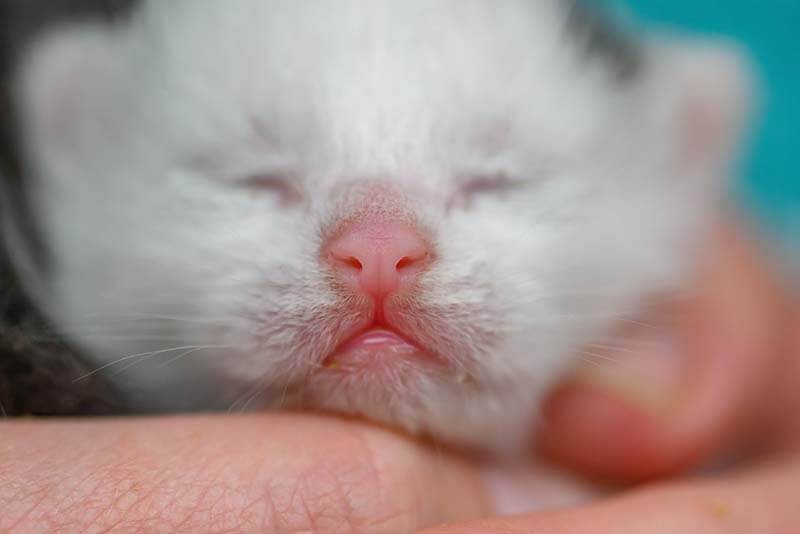
Prevention
Taking care of the microclimate in the apartment is an important measure to prevent dry skin. It is required to carry out wet cleaning in a timely manner, to ventilate the room. It is worth considering buying a humidifier to create optimal climatic conditions in the apartment, especially in winter.
Some infectious diseases that damage the cat’s nose can be prevented in advance by vaccination, which is usually started from 2 months of age.
In the future, the animal is revaccinated annually.
To date, several combination vaccines are available that protect cats from the main pathogens of respiratory diseases: calicivirus, herpes virus, chlamydia.
It is necessary to carry out regular health checks (medical examination) in a veterinary clinic, which can be combined with an annual vaccination.
They can help identify health problems early.
It is necessary to keep any dangerous, small objects that animals can inhale out of reach. It is also advisable to minimize the use of air fresheners, perfumes and other potential irritants in the home where the cat lives.
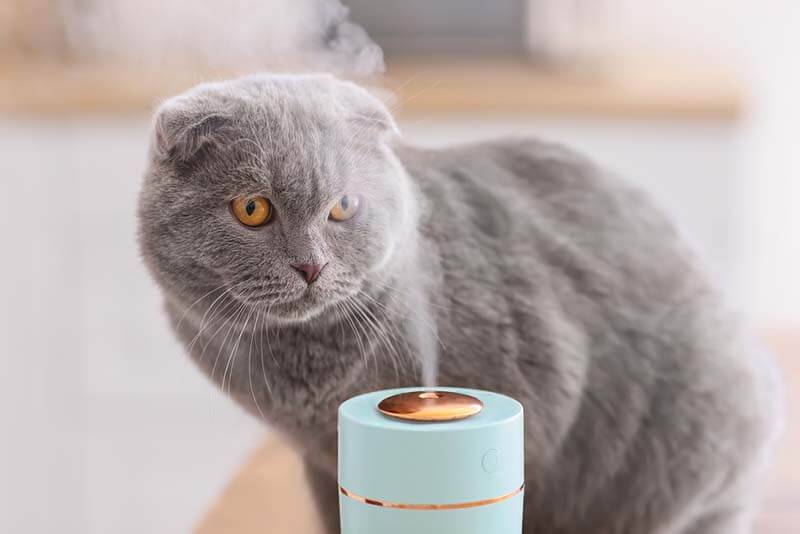
Dry nose in a cat: the main thing
Each pet’s nose is unique. Normally, during the day, the cat’s nose can be both dry and wet.
A dry or hot nose is not a sign of illness at all, while a wet or cold nose is not a sign of health.
A wet nose helps cats in thermoregulation, enhances the sense of smell.
There are both dangerous causes, for example, viral, bacterial infections, and non-dangerous ones – physical activity, climatic conditions, due to which the cat’s nose temperature may change.
Any cat with a cracked, irritated nose should be examined by a veterinarian to determine the cause.
In babies, due to still imperfect thermoregulation and inability to lick, the nose is often dry and hot.
Answers to frequently asked questions
Sources:
Heather M. Why Is My Cat’s Nose Dry? https://www.aspcapetinsurance.com/resources/why-is-my-cats-nose-dry/#:~:text=Some%20perfectly%20healthy%20cats%20tend,may%20be%20a%20bit%20dehydrated
Christine O’Brien Cat Dry Nose: When to Be Concerned, 2019, https://www.hillspet.com/cat-care/healthcare/why-cats-nose-is-dry
Stregowski J.Why Is Your Cat’s Nose Dry?, 2022, https://www.thesprucepets.com/why-is-my-cats-nose-dry-3384804
Barchas E. Is a Dry Cat Nose a Cause for Concern?, 2018, https://www.catster.com/lifestyle/cat-health-care-nose-wet-moist-cool-ask-a-vet
Pendergrass A. Cat Eye Infection: Symptoms and Treatment Options, 2022, https://www.greatpetcare.com/cat-health/cat-eye-infection/
Dube Dwilson S.Why Is My Cat’s Nose Wet?, 2018, https://khpet.com/blogs/cats/why-is-my-cats-nose-wet



